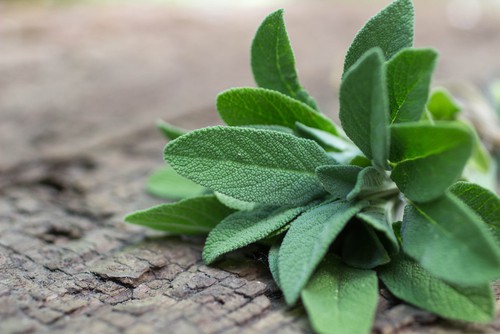Black spots on sage leaves safe to eat can be concerning for gardeners and cooks alike. While they may indicate a disease or pest problem, not all black spots are harmful. Understanding the causes of black spots and how to identify them can help determine whether or not they are safe to eat.
Sage is a popular herb used in many cuisines for its distinct flavor and aroma. It is also a hardy plant that can thrive in a variety of growing conditions. However, like any plant, sage is susceptible to pests and diseases that can cause black spots on its leaves.
Some common causes of black spots on sage leaves include fungal diseases like black spot fungus and powdery mildew, as well as insect infestations like spider mites and aphids.
It’s important to note that not all black spots on sage leaves are harmful. Some spots may be caused by natural aging or environmental factors like sunburn or wind damage.
Additionally, some gardeners and cooks may choose to use sage leaves with black spots if they are still fresh and healthy. However, it’s important to properly identify the cause of the black spots and take appropriate action to prevent further damage to the plant.
Key Takeaways
- Not all black spots on sage leaves are harmful.
- Common causes of black spots on sage leaves include fungal diseases and insect infestations.
- Proper identification and prevention measures can help ensure safe consumption of sage leaves with black spots.
Other popular posts:
Identifying Black Spots on Sage Leaves
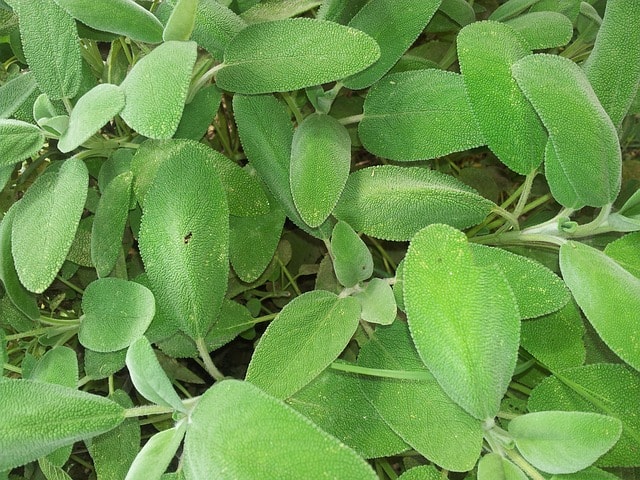
Sage is a popular herb used in cooking and for medicinal purposes. However, the appearance of black spots on sage leaves can be a cause for concern for gardeners and cooks alike. These black spots can be an indication of various diseases that affect sage plants, such as Alternaria leaf spot, mint rust, and powdery mildew.
The symptoms of black spots on sage leaves can vary depending on the specific disease. Alternaria leaf spot, for example, can cause small, dark brown to black spots on the leaves that may have a yellow halo.
Mint rust, on the other hand, can cause yellow-orange spots on the upper surface of the leaves and black spots on the underside. Powdery mildew can cause a white powdery coating on the leaves that may eventually turn black.
It is important to note that not all black spots on sage leaves are harmful. Sometimes, the black spots can be caused by environmental factors, such as sunburn or insect damage. In these cases, the sage leaves are still safe to eat.
To determine if the black spots on sage leaves are a cause for concern, gardeners and cooks should examine the leaves closely and look for other symptoms. If the black spots are accompanied by wilting, yellowing, or curling of the leaves, it may be a sign of a more serious disease.
In conclusion, identifying black spots on sage leaves can be a challenge, as the symptoms can vary depending on the specific disease. Gardeners and cooks should closely examine the leaves and look for other symptoms to determine if the black spots are a cause for concern.
Black Spots on Sage Leaves – 3 Common Problems
Black spots on sage leaves can be caused by various factors, including environmental, cultural, and disease-related issues. Understanding the causes of black spots on sage leaves is crucial to prevent the spread of the disease and ensure that the plant remains healthy.
1. Environmental Factors
Environmental factors such as temperature, humidity, and water can play a significant role in the development of black spots on sage leaves. High humidity levels can cause fungal diseases to thrive, while low humidity levels can cause the leaves to dry out and crack.
Overwatering or underwatering the plant can also lead to the development of black spots on the leaves. Improper watering can cause the roots to rot, leading to the plant’s decline and eventual death.
2. Soil pH

Soil pH can also play a role in the development of black spots on sage leaves. Sage prefers a slightly acidic soil with a pH range of 6.0 to 7.0. If the soil is too alkaline, sage may develop nutrient deficiencies or become more susceptible to diseases.
3. Fungal Diseases
Fungal diseases are a common cause of black spots on sage leaves. The most common fungal disease affecting sage is powdery mildew, which appears as a white powdery coating on the leaves.
Another fungal disease that can cause black spots on sage leaves is black spot fungus, which can attack any plant with fleshy leaves and stems. Fungal diseases can be prevented by maintaining proper air circulation around the plant, avoiding overhead watering, and keeping the leaves dry.
Prevention
Preventing the development of black spots on sage leaves involves maintaining healthy growing conditions. This includes providing the plant with adequate sunlight, proper watering, and well-draining soil.
It’s also essential to keep the plant free from debris and to remove any infected leaves immediately to prevent the spread of disease. Applying a fungicide can also help prevent the development of fungal diseases.
In conclusion, understanding the causes of black spots on sage leaves is crucial to prevent the spread of disease and ensure that the plant remains healthy.
Environmental factors, soil pH, and fungal diseases can all contribute to the development of black spots on sage leaves. By maintaining proper growing conditions and taking preventative measures, gardeners can keep their sage plants healthy and productive.
Impact on Sage Plants

Black spots on sage leaves can impact the overall health of sage plants. Sage plants, also known as Salvia officinalis, are hardy and resilient plants that can tolerate a range of growing conditions. However, when sage plants are affected by black spots, it can weaken the plant and make it more susceptible to other diseases and pests.
The black spots on sage leaves can be caused by various factors, including fungal infections, bacterial infections, and insect infestations. These spots can be an indication of damage to the plant’s roots, stems, or new growth.
In some cases, the black spots can also be a sign of a more serious problem, such as a disease that affects the woody stems of the plant.
If left untreated, the black spots can spread throughout the plant, causing the leaves to yellow and eventually die. This can weaken the plant and make it more susceptible to other diseases and pests. In severe cases, the plant may not survive.
To prevent black spots on sage leaves, it is important to maintain good growing conditions for the plant. This includes providing adequate water and nutrients, as well as ensuring proper air circulation around the plant. It is also important to remove any infected leaves or stems to prevent the spread of disease.
In conclusion, black spots on sage leaves can have a significant impact on the health of sage plants. It is important to identify the cause of the black spots and take appropriate measures to prevent further damage to the plant.
With proper care and attention, sage plants can thrive and produce healthy leaves for culinary and medicinal use.
Safe Consumption of Sage Leaves with Black Spots
Sage is a popular herb used in cooking and herbal medicine. However, black spots on sage leaves can be a cause for concern for some individuals. The good news is that sage leaves with black spots are generally safe to eat, as long as they are properly washed and cooked.
1. Sage Leaves
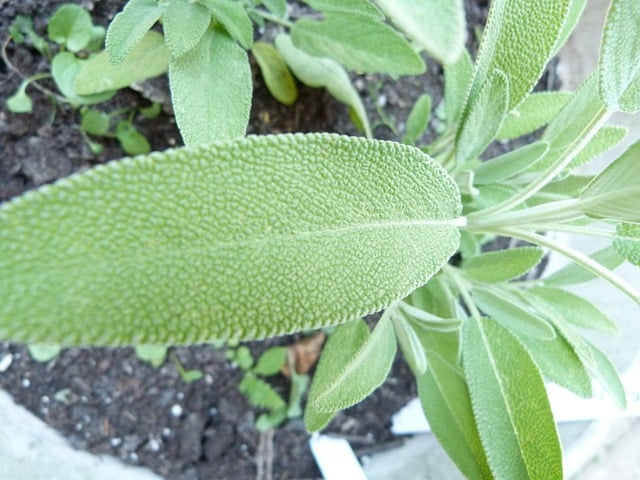
Sage leaves are a common ingredient in many dishes, such as stuffing, sauces, and meat dishes. The leaves have a slightly bitter, earthy flavor that pairs well with many other herbs and spices.
2. Flavor
Black spots on sage leaves can affect the flavor of the herb. The spots are caused by a fungal infection that can cause the leaves to become discolored and wilted. If the spots are severe, the leaves may have a slightly bitter taste. However, if the spots are only minor, the flavor of the sage should not be affected.
3. Plant Leaves
Black spots on plant leaves are a common occurrence in many plants, including sage. The spots are caused by a fungal infection that can spread rapidly if left untreated. It is important to keep an eye on the health of your sage plants and take steps to prevent fungal infections.
4. Black Spots
Black spots on sage leaves are caused by a fungal infection called Diplocarpon rosae. The fungus can spread quickly, especially in warm, humid conditions. To prevent the spread of the fungus, it is important to remove infected leaves and keep the plant well-ventilated.
5. Proper Preparation
To safely consume sage leaves with black spots, it is important to properly wash and cook the leaves. Rinse the leaves under cold water and gently pat dry with a paper towel. Cook the leaves in a recipe as directed, and discard any leaves that appear overly wilted or discolored.
In conclusion, sage leaves with black spots are generally safe to eat as long as they are properly washed and cooked. While the spots may affect the flavor of the herb, they do not pose a health risk to most individuals. However, it is important to keep an eye on the health of your sage plants and take steps to prevent fungal infections.
Preventive Measures for Black Spots
Black spots on sage leaves are a common problem that can be prevented with proper care and maintenance. Here are some preventive measures that gardeners can take to avoid black spots on sage leaves:
1. Control Pests
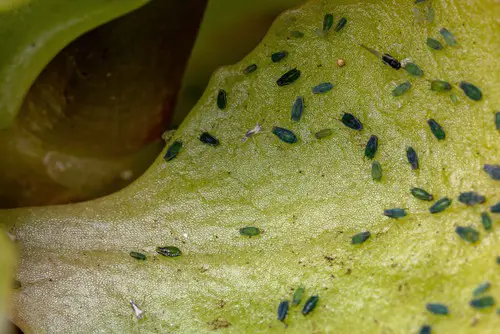
One of the main causes of black spots on sage leaves is pests. Scales and aphids are usually the culprits in sooty mold infestations. It’s important to identify the species of insect present by checking your plants and see if you see aphids or scale.
Control of sooty mold is targeted at preventing or reducing insect populations. Gardeners can use insecticidal soap or neem oil to control pests.
2. Ensure Good Air Circulation
Good air circulation is essential to prevent black spots on sage leaves. Gardeners should ensure that there is enough space between plants to allow for proper air circulation. They can also use fans to improve air circulation around plants.
3. Ensure Proper Drainage
Sage plants require well-draining soils to prevent black spots on leaves. Well-draining soils allow for well-established and healthy roots and have tiny pore spaces that hold oxygen. Gardeners should ensure that their sage plants are not sitting in water and that their drainage system is working properly.
4. Fertilize Properly
Over-fertilization can cause black spots on sage leaves. Gardeners should use a balanced fertilizer and follow the instructions on the package. They should also avoid fertilizing during dry conditions.
5. Prune Regularly
Regular pruning can help prevent black spots on sage leaves. Gardeners should remove any dead or diseased leaves or stems from the plant. They should also prune the plant to promote good air circulation and prevent overcrowding.
6. Provide Proper Protection
Sage plants need protection from extreme weather conditions. Gardeners should ensure that their sage plants are not exposed to harsh winds or heavy rain. They can also protect their plants by covering them with a light cloth or plastic sheet during extreme weather conditions.
7. Use Containers with Proper Drainage

If gardeners are growing sage in containers, they should ensure that the container has proper drainage. They can add sand to the soil to improve drainage. Gardeners should also ensure that their sage plants are not sitting in water.
By following these preventive measures, gardeners can avoid black spots on sage leaves and keep their plants healthy and productive.
Treatment Options for Black Spots on Sage
Black spots on sage leaves are a common problem for gardeners. While they don’t necessarily make the sage leaves unsafe to eat, they can make them less appealing and may indicate an underlying issue with the plant’s health. Here are some treatment options for black spots on sage:
1. Fertilize the Plant
One possible reason for black spots on sage leaves is nutrient deficiency. Fertilizing the plant with a balanced fertilizer can help ensure that it has all the nutrients it needs to stay healthy. Be sure to follow the instructions on the fertilizer package carefully to avoid over-fertilizing, which can harm the plant.
2. Use a Fungicide
If the black spots are caused by a fungal infection, a fungicide may be necessary to treat the problem. There are many different types of fungicides available, including baking soda solutions, neem oil, and commercial products. Follow the instructions on the fungicide carefully to ensure that it is used safely and effectively.
3. Use Insecticidal Soap
In some cases, black spots on sage leaves may be caused by insect damage. Insecticidal soap can be an effective treatment for many types of insects, including aphids and spider mites. Be sure to follow the instructions on the soap carefully to avoid harming the plant.
4. Use a Mild Dish Detergent and Olive Oil Solution
A solution made from a mild dish detergent and olive oil can be an effective treatment for black spots on sage leaves caused by insects or fungus. Mix 1 tablespoon of mild dish detergent, 2 1/2 tablespoons of olive oil, and 1 gallon of water. Spray the solution on the infected plants, being sure to cover all surfaces of the leaves.
5. Remove Infected Leaves
If the black spots are limited to just a few leaves, it may be best to simply remove them from the plant. This can help prevent the infection from spreading to other parts of the plant. Be sure to dispose of the infected leaves in a way that prevents the infection from spreading to other plants.
Pests and Diseases Affecting Sage

Sage is a hardy plant that is relatively easy to grow, but it is still susceptible to pests and diseases. Some of the most common pests that affect sage are aphids, slugs, thrips, spider mites, and caterpillars. These pests can cause significant damage to the plant if not controlled.
Aphids are tiny insects that suck the sap out of the plant, causing the leaves to curl and turn yellow. They can be controlled by spraying the plant with a strong jet of water or by using insecticidal soap.
Slugs are another common pest that can cause damage to the leaves of the sage plant. They can be controlled by placing a saucer of beer near the plant, which will attract and drown the slugs.
Thrips are small, slender insects that can cause damage to the leaves of the sage plant. They can be controlled by using insecticidal soap or by introducing natural predators such as ladybugs or lacewings.
Spider mites are another common pest that can cause damage to the leaves of the sage plant. They can be controlled by spraying the plant with a strong jet of water or by using insecticidal soap.
Caterpillars can also be a problem for sage plants, as they can eat the leaves and cause significant damage. They can be controlled by picking them off by hand or by using Bacillus thuringiensis, a natural insecticide.
In addition to pests, sage plants can also be affected by diseases such as powdery mildew, root rot, and nutrient deficiencies. Powdery mildew is a fungal disease that causes a white powdery coating to appear on the leaves of the plant. It can be controlled by spraying the plant with a solution of water and baking soda.
Root rot is a fungal disease that affects the roots of the plant, causing them to rot and die. It can be caused by overwatering or poor drainage. To prevent root rot, make sure the soil is well-draining and do not overwater the plant.
Nutrient deficiencies can also cause problems for sage plants, particularly if they are grown in poor soil. Sage plants require a well-draining soil that is rich in organic matter and nutrients such as nitrogen, phosphorus, and potassium. Adding compost or fertilizer to the soil can help prevent nutrient deficiencies.
Overall, by being vigilant and taking steps to prevent pests and diseases, it is possible to keep sage plants healthy and productive.
Sage in Gardening and Cuisine
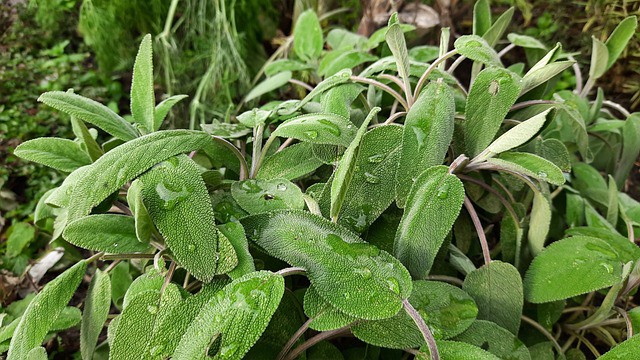
Sage is a popular herb that is widely used in both gardening and cuisine. It is a hardy plant that is easy to grow, making it a favorite among gardeners. Sage plants have a distinctive flavor that is often described as earthy and slightly bitter, making it a popular addition to many dishes.
In the garden, sage plants are known for their attractive leaves. The leaves are typically grey-green in color, although there are some varieties that have purple or golden leaves. Sage plants are also known for their distinctive aroma, which can be described as slightly sweet and slightly spicy.
Sage leaves are commonly used in cooking, both fresh and dried. The leaves can be used to add flavor to a wide range of dishes, from meat and poultry to soups and stews. Sage is also commonly used in stuffing for poultry and other meats.
In addition to its use in cooking, sage is also used in herbal medicine. It is believed to have a number of health benefits, including improving digestion, reducing inflammation, and boosting the immune system.
When it comes to eating sage leaves, it is generally safe to do so. However, it is important to note that some sage plants may develop black spots on their leaves, which can be a sign of a fungal infection.
While these black spots are not harmful to humans, they can affect the flavor of the sage leaves and may make them less desirable for use in cooking.
Overall, sage is a versatile herb that is a great addition to any garden or kitchen. Whether used fresh or dried, it adds a unique flavor to a wide range of dishes and is believed to have a number of health benefits.
Frequently Asked Questions
Can you eat sage with brown spots?
It is generally safe to eat sage with brown spots. The brown spots are likely caused by natural aging or environmental factors, such as sun exposure or humidity. However, it is always a good idea to inspect the sage for signs of mold or other spoilage before consuming.
What are the black spots on sage leaves?
The black spots on sage leaves are often caused by sucking insects, which produce a honeydew that in turn grows a sooty mold. This mold can be unsightly but is generally not harmful to humans. However, it is best to remove any affected leaves before using the sage.
What is the black stuff on sage?
The black stuff on sage is likely sooty mold, a type of fungus that grows on the honeydew produced by sucking insects. While it can be unsightly, it is generally not harmful to humans. However, it is best to remove any affected leaves before using the sage.
How do you know when sage has gone bad?
Sage that has gone bad may have a slimy texture or a foul odor. It may also have mold or other signs of spoilage. If you are unsure whether your sage has gone bad, it is best to err on the side of caution and discard it.
Does fresh sage go bad?
Fresh sage can go bad if it is not stored properly. It is best to store fresh sage in a plastic bag in the refrigerator, where it should last for up to a week. If it starts to wilt or develop mold, it is best to discard it.
Does dried sage go bad?
Dried sage can last for several years if stored in an airtight container in a cool, dry place. However, over time, it may lose its flavor and aroma. If your dried sage no longer smells or tastes fresh, it is best to replace it.

Hey, I’m Lisa and I’ve been an avid gardener for over 30 years. I love writing, talking and living in the garden! Feel free to connect with me on my socials below

